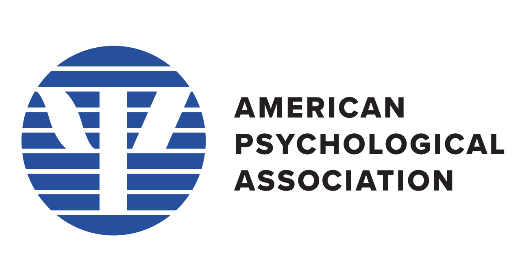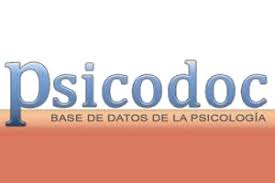This journal provides open, immediate access to its contents, based on the principle that offering the public free access to research helps to promote a higher global exchange of knowledge.
As such, all journal articles are published under a Creative Commons Attribution-NonCommercial-ShareAlike 4.0 International License (CC BY-NC-SA), by which commercial use of the original work or its possible derived works is not allowed, and the distribution thereof must be done with the same license elements regulating the original work.
http://creativecommons.org/licenses/by-nc-sa/4.0/
Abstract
The consumption of psychoactive substances (PAS) has addictive effects that modify the addict's thinking, mind and spirit, and not only generates a latent risk that affects people's health, but also has negative consequences for society itself, such as greater economic investment in health, the presence of street dwellers, and an increase in crime, among other aspects. The objective of this study was to evaluate the statistics related to the consumption of psychoactive substances worldwide in the last three decades. For the analysis of the information, the multivariate technique of variance MANOVAwith orthogonal canonical contrast was used, and the SAS University statistical package was used to process the information. As an outstanding result, statistical divergence was found between regions, with North America occupying the first place followed by Asia and Oceania. The highest number of deaths due to disorders related to PAS consumption occurs in people under 49 years of age. The accelerated increase and abuse of PAS is generating high rates of morbidity and mortality globally. It is a priority to act urgently from all fronts, health professionals, political and community leaders, educational entities and the family nucleus, to control this problem and try to reduce the consumption and abuse of PAS.
References
Adesida, S. A., Quadri, M. O. y Adedeji, A. M. (2022). Use of psychoactive substances among students in a Nigerian University: An imperative for intervention programs. Scientific African, 16, e01139. https://doi.org/10.1016/j.sciaf.2022.e01139
Admasu-Basha, E., Semu-Tefera, A., Tesema-Tilahun, A. y Fenta-Amede, A. (2023). Magnitude and Associated Factors of Psychoactive Substance Use among Youths at Selected Administrative Towns of North Shewa Zone, Amhara Region, Ethiopia. J. Addict, 3, 2124999. https://doi. org/10.1155/2023/2124999
Álvarez, M., Santacruz, G., Calpa, A. M., Zambrano, C., Hernández, E. y Matabanchoy, S. (2020). Nivel de riesgo frente al consumo de sustancias psicoactivas en conductores de transporte público urbano. Informes Psicológicos, 20(2), 67-81. http://dx.doi. org/10.18566/infpsic.
Arnau, J. y Bono, R. (2008). Estudios longitudinales. Modelos de diseño y análisis. Escritos en Psicología, 2(1), 32-41. https://www.redalyc.org/ pdf/2710/271020194005.pdf.
Arteaga-Zambrano, V. M. y Mendoza-Alcívar, W. R. (2022). El Consumo de Sustancias Psicoactivas en Adolescentes de San Alejo durante la Pandemia por Covid-19. Pol. Con., 7(3), 1360-1381. https:// doi.org/10.23857/pc.v7i3.3797
Ballestar-Tarín, M. L., Ibáñez-Del-Valle, V., Cauli, O. y Navarro-Martínez, R. (2022). Personal and Social Consequences of Psychotropic Substance Use: A Population-Based Internet Survey. Medicina (Kau- nas), 58(1), 1-22. https://doi.org/10.3390/medicina58010065
Berrocal-Narváez, N. E., Ocampo-Rivero, M. y Herrera- Guerra, E. (2018). Determinantes sociales en el consumo de sustancias psicoactivas en estudiantes universitarios en 2016. Enfermería (Montevideo), 7(2), 12-23. https://doi.org/10.22235/ech.v7i2.1644
Carrasco-Cifuentes, A. C., Gutiérrez-García, R. A.,Cudris-Torres, L., Concha-Mendoza, C. C. y Ba- rrios-Núñez, A. (2020). Consumo de sustancias psicoactivas, factores psicosociales y rendimiento académico en adolescentes colombianos. Archivos Venezolanos de Farmacología y Terapéutica, 39(3), 279-284. https://www.revistaavft.com/images/re- vistas/2020/avft_3_2020/7_consumo.pdf
Das, J. K., Salam, R. A., Arshad, A., Finkelstein, Y. Bhutta, Z. A. (2016). Interventions for Adolescent Sub- stance Abuse: An Overview of Systematic Reviews. J Adolesc Health. 59(4 Suppl), S61-S75. https://doi. org/10.1016/j.jadohealth.2016.06.021
Diniz, A., Pillon, S. C., Monteiro, S., Pereira, A., Gonçalves, J. y Santos, M. A. (2017). Elderly substance abuse: an integrative review. Psicol. Teor. Prat., 19(2), 23-41. http:// doi.org/10.5935/1980-6906
Fatima, I. (2017). Drug Abuse among Youth: Causes, Effects and Control. J Integ Comm Health, 6(1), 1-5. https://journals.indexcopernicus.com/api/file/ viewByFileId/217480.pdf
Fernández-Cruz, M., Gijón-Puerta, J. y Lizarte-Simón, E. J. (2016). Consumo de Sustancias psicoactivas en estudiantes de magisterio y sus creencias acerca de la educación preventiva. Acción psicol, 13(1), 67- 78. https://dx.doi.org/10.5944/ap.13.1.17419
Ferrel, F., Ferrel, L., Alarcón, A. y Delgado, K. (2016). El consumo de sustancias psicoactivas como indicador de deterioro de la salud mental en jóvenes escolarizados. Psychologia: Avances de la Disciplina, 10(2), 43-54. https://doi.org/10.21500/19002386.2552
Gamboa, D., Jørgenrud, B., Bryun, E. A., Vindenes, V., Koshkina, E. A., Nadezhdin, A. V., Kabashi, S., Tetenova, E. J., Berg, T., Nyman, A. A. T., Kol- gashkin, A. J., Petukhov, A. E., Perekhodov, S. N., Davydova, E. N., Lerdal, A., Nordby, G. y Bog- strand, S. T. (2020). Prevalence of psychoactive substance use among acutely hospitalised patients in Oslo and Moscow: a cross-sectional, observational study. BMJ Open, 10(9), e032572. https:// doi.org/10.1136/bmjopen-2019-032572
Guerrero-Aragón, S. C., García-Perdomo, A. A., Hernández-Zambrano, S. M. y Castiblanco-Montañez, R. A. (2020). Phenomenology of con sumption of psycoactive substances in university students in Bogota. Rev. Cienc. Cuidad, 17(2), 53-64. https:// doi.org/10.22463/17949831.1870
Mendoza-Carmona, Y. L. y Vargas-Peña, K. (2017). Factores psicosociales asociados al consumo y adicción a sustancias psicoactivas. Revista Electrónica de Psicología Iztacala, 20(1), 139-167. https:// www.medigraphic.com/cgi-bin/new/resumen. cgi?idarticulo=75812
Nachinaab, J. O. (2018). The Causes and Effects of Substance Abuse in Communities: A Case Study of Wli-Agorviefe in the Hohoe Ahado District of the Volta Region. SSRN Electronic Journal. https:// doi.org/10.2139/ssrn.3146432
Oficina de las Naciones Unidas Contra la Droga y el De- lito (2018). Informe Mundial sobre las Drogas. UNO- DC. https://www.unodc.org/wdr2018/prelaunch/ WDR18_ExSum_Spanish.pdf
Onaolapo, O. J., Olofinnade, A. T., Ojo, F. O., Adeleye, O., Falade, J. y Onaolapo, A. Y. (2022). Substance use and substance use disorders in Africa: An ep- idemiological approach to the review of existing literature. World J Psychiatry, 12(10), 1268-1286. https://dx.doi.org/10.5498/wjp.v12.i10.1268
Perea-Machado, T., & Rodríguez-Flórez, M. M. (2020). El consumo de sustancias psicoactivas en adoles- centes en etapa escolar. Revista Sinergia, 7, 165- 194. http://sinergia.colmayor.edu.co/ojs/index. php/Revistasinergia/article/view/101/82
Price, R. K., Risk, N. K., Wong, M. M. y Klingle, R. S. (2002). Substance use and abuse by Asian Americans and Pacific Islanders: preliminary results from four national epidemiologic studies. Public Health Rep, 117(1), 39-50. https://www.ncbi.nlm. nih.gov/pmc/articles/PMC1913701/
Sanz, P. S. J. (2019). Trastorno por consumo de sustancias. Medicine, 12(85), 4984-92. http://cipesalud.com.ar/wp-content/uploads/2020/04/trastornos-por-consumo-de-sustancias.pdf.
Seçim, G. (2017). A Study on Substance Abuse Prevention. EURASIA Journal of Mathematics Science and Technology Education, 13(6), 2485-2504. https://doi.org/10.12973/eurasia.2017.01236a
Shau, S. y Zhou, R. (2022). The Relationship Between Drug Addiction and Adolescent Cognitive Development. Advances in Social Science, Education and Humanities Research, 638, 1163-1167. https://doi.org/10.2991/assehr.k.220110.218 Silva-
Monsalve, A. M., Mendoza-Girado, J. F. y Gira- do-Ruiz, A. I. (2018). Prevención del consumo de sustancias psicoactivas. Un aporte desde la neurociencia y el aprendizaje basado en proyectos ABP. Revista Iberoamericana de Educación, 78(1), 107-126. https://doi.org/10.35362/rie7813214
Tena, A., Castro, G., Marín, R., Gómez, P., Fuente, A.y Gómez, R. (2018). Consumo de sustancias en adolescentes: consideraciones para la práctica médica. Revista Medicina Interna, 34(2), 264-277. https://doi.org/10.24245/mim.v34i2.1595
Toro, J., Linares, A., Ardila, C., Fonseca, J. y Figueroa, J. (2018). Consumo de sustancias psicoactivas en población adolescente. Revista Cuadernos Hispano- americanos de Psicología, 18(1), 32-45. https://doi. org/10.18270/chps..v18i1.2855
Zachar, P., First, M. B. y Kendler, K. S. (2022). Revising substance-related disorders in the DSM-5: a history. Journal of Studies on Alcohol and Drugs, 83(1), 99-105. https://doi.org/10.15288/jsad.2022.83.99
Zapata, F., Matey, J. M., Montalvo, G. y García-Ruiz, C. (2021). Chemical classification of new psychoactive substances (NPS). Microchemical Journal, 163. https://doi.org/10.1016/j.mi- croc.2020.105877.105877





















